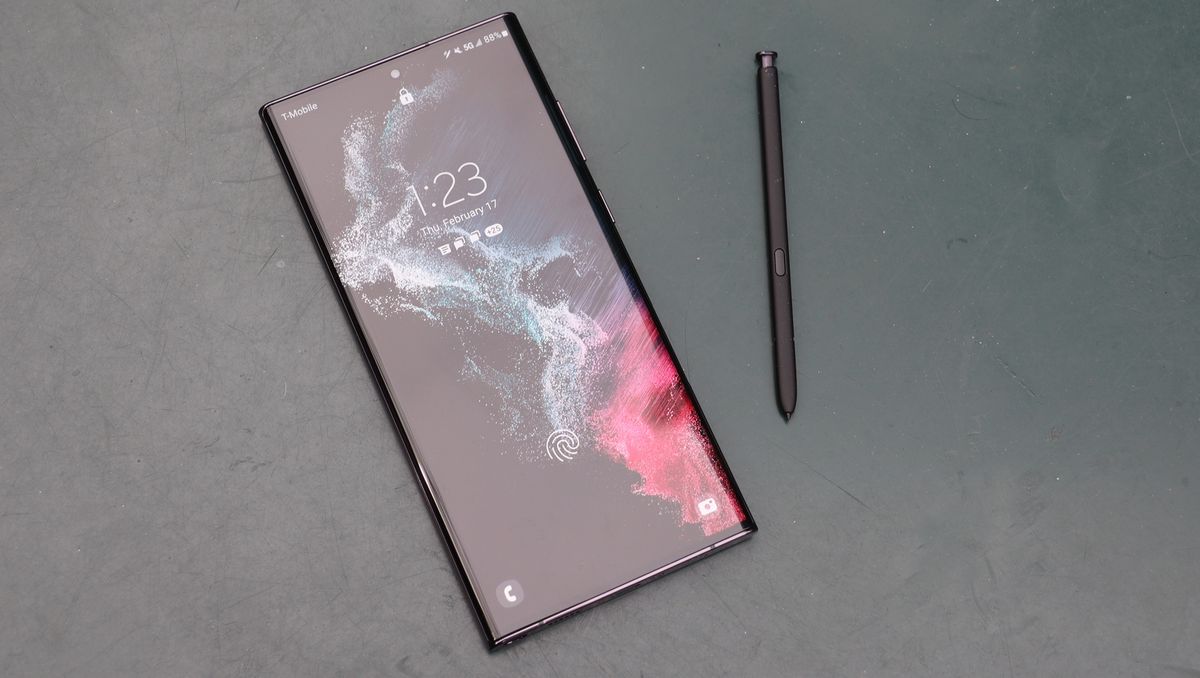
The Samsung Galaxy S23 and its siblings are likely to be among the most exciting phones of 2023, and as we get closer to their launch, rumors and leaks are heating up, with the latest being a benchmark for the Samsung Galaxy S23 Ultra.
Spotted by MySmartPrice (opens in new tab), this Geekbench listing points to the phone having a Snapdragon 8 Gen 2 chipset. That’s no real surprise since – at least in some regions – the Samsung Galaxy S22 line used the Snapdragon 8 Gen 1, but it’s good news, since the Gen 2 will probably be the most powerful chipset available to Android phones until the Gen 2 Plus or Gen 3 arrive, later into 2023.
The Snapdragon 8 Gen 2 itself isn’t even out yet, but we’re expecting it to debut at Qualcomm’s Snapdragon Summit in mid-November, so it should be out in time for the Galaxy S23 line’s launch, which itself is likely to happen in February next year.
It’s worth noting, however, that this benchmark is for a US model of the phone, which makes the included chipset even less surprising, because Snapdragon silicon is practically always used in Samsung’s flagship phones in the region. Some other markets – including the UK – often get Exynos chipsets instead, but there are reports that this time Snapdragon will be used everywhere.
This isn’t the first time we’ve specifically heard rumors of the Snapdragon 8 Gen 2 being used either, with a recent specs list leak from Yogesh Brar (opens in new tab) (via PhoneWorld (opens in new tab)), for example, also pointing to that chipset.
Samsung Galaxy S23(rumoured)- 6.1″ FHD+ sAMOLED, 120Hz- Qualcomm Snapdragon 8 Gen 2 SoC- Rear Cam: 50MP (OIS) + 12MP (UW) + 10MP (Tele)- Front Cam: 10MP- 8GB RAM- 128/256GB storage- Android 13, OneUI 5- 3,900mAh battery, 25W wired, 15W wireless chargingOctober 18, 2022
This specs list pertains to the standard Samsung Galaxy S23, but we usually see Samsung use the same chipset across the entire Galaxy S range, so that’s no surprise. Nor are the rest of the leaked specs here because, aside from the chipset and a slightly larger 3,900mAh battery, the listed specs are exactly the same as those of the S22.
In any case, the benchmark isn’t all good news, because it also mentions just 8GB of RAM, which while plenty for most users, isn’t a particularly high amount for an Ultra phone. It’s also no upgrade on the starting capacity of the Samsung Galaxy S22 Ultra – though pricier versions of that device stretched to 12GB, so we’d expect at least that again.
Analysis: these probably won’t be the first phones to use a Snapdragon 8 Gen 2
If the Snapdragon 8 Gen 2 lands in November and the Samsung Galaxy S23 line lands in February, then Samsung’s upcoming flagships will likely be among the first phones to use the chipset.
After all, it’s only high-end phones that will be getting the Gen 2, and we’re not expecting too many of them in that window.
However, there will probably be at least one that beats Samsung to the punch, namely the Xiaomi 13. Based on past form, this may well debut in China in December 2022, and one leaker thinks it could land as soon as November.
But the global launch might be later, with the Xiaomi 12 not seeing a wider release until April of this year. Similarly, Motorola managed to beat even Xiaomi out of the gate last year, with the China-exclusive Edge X30, however, much like Xiaomi, the Edge X30’s most like-minded international equivalent (the Edge 30 Pro) didn’t arrive until well into 2022.
As such, it’s possible the Samsung Galaxy S23 line will still be the first to use this chipset in the US, UK, Australia and elsewhere internationally. Plus, Xiaomi phones don’t come to the US anyway, so that counts the Xiaomi 13 out there.
Unless the S23 line turns out to be drastically different from what these leaks suggest and Samsung somehow manages to drop the ball, all three of its next Galaxy S phones will likely make their way onto our rundown of the best Samsung phones. For those that can’t wait that long, check out the our best Black Friday phone deals, which is being constantly updated in the lead up to Black Friday (November 25) and beyond.
